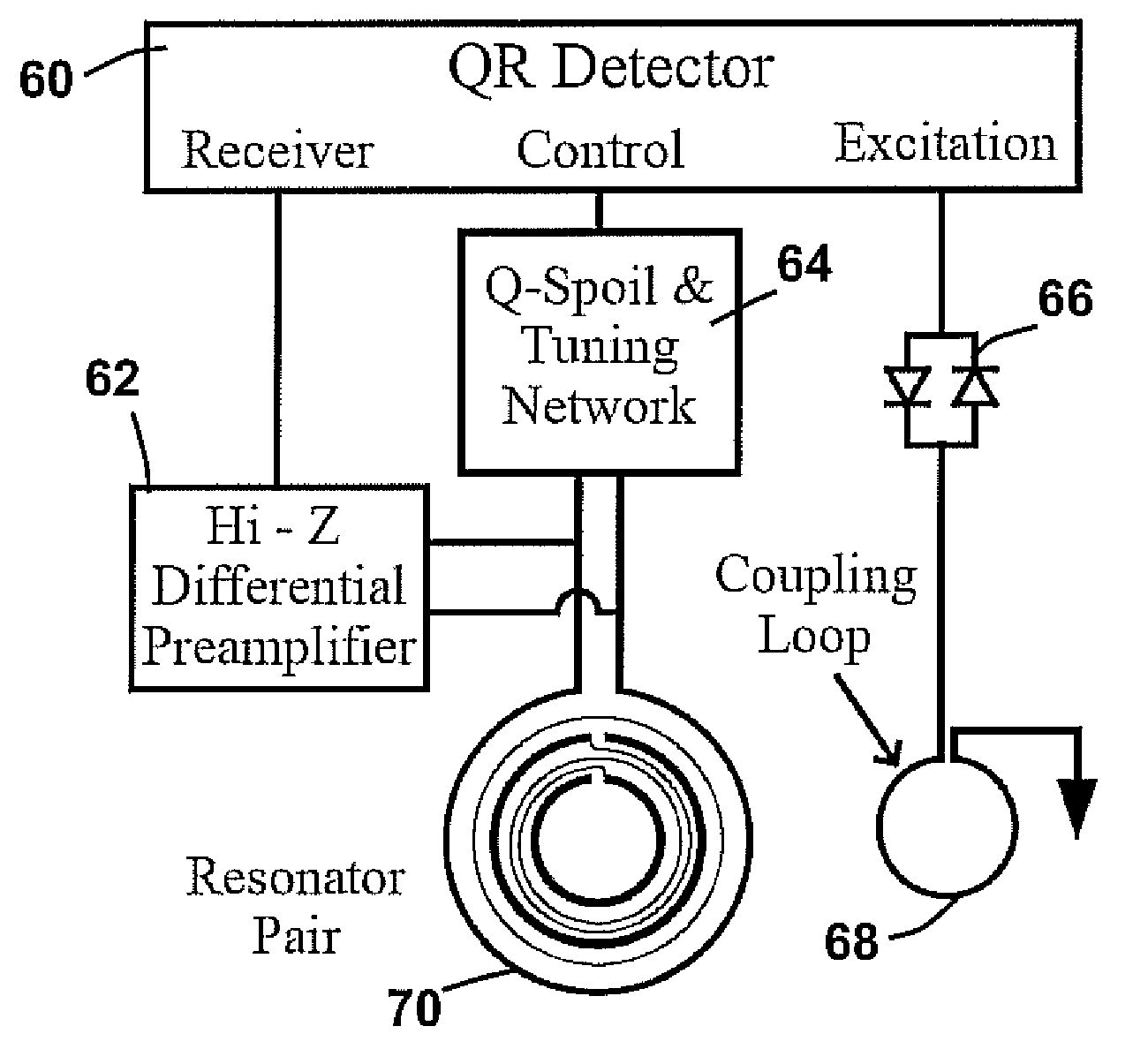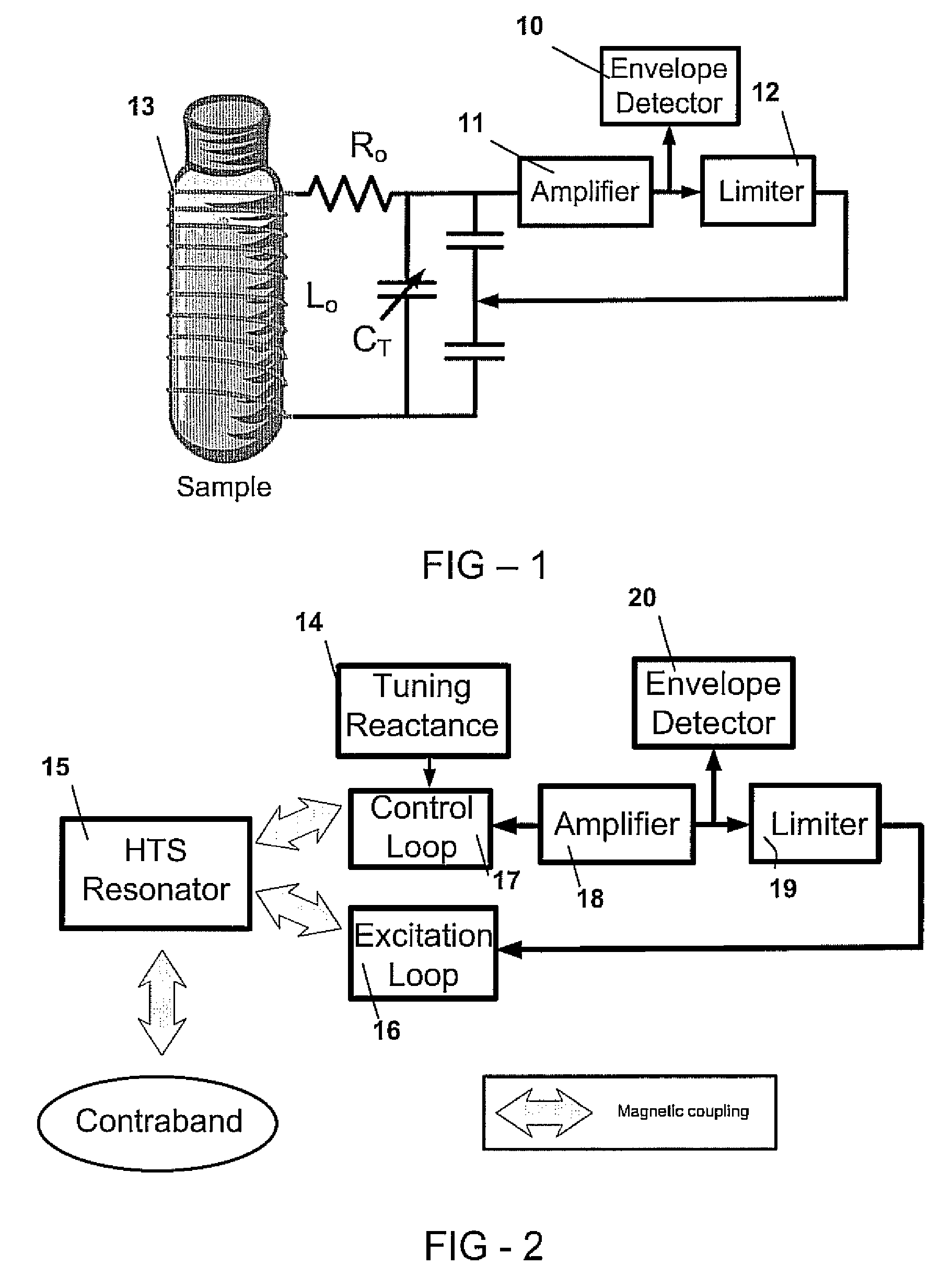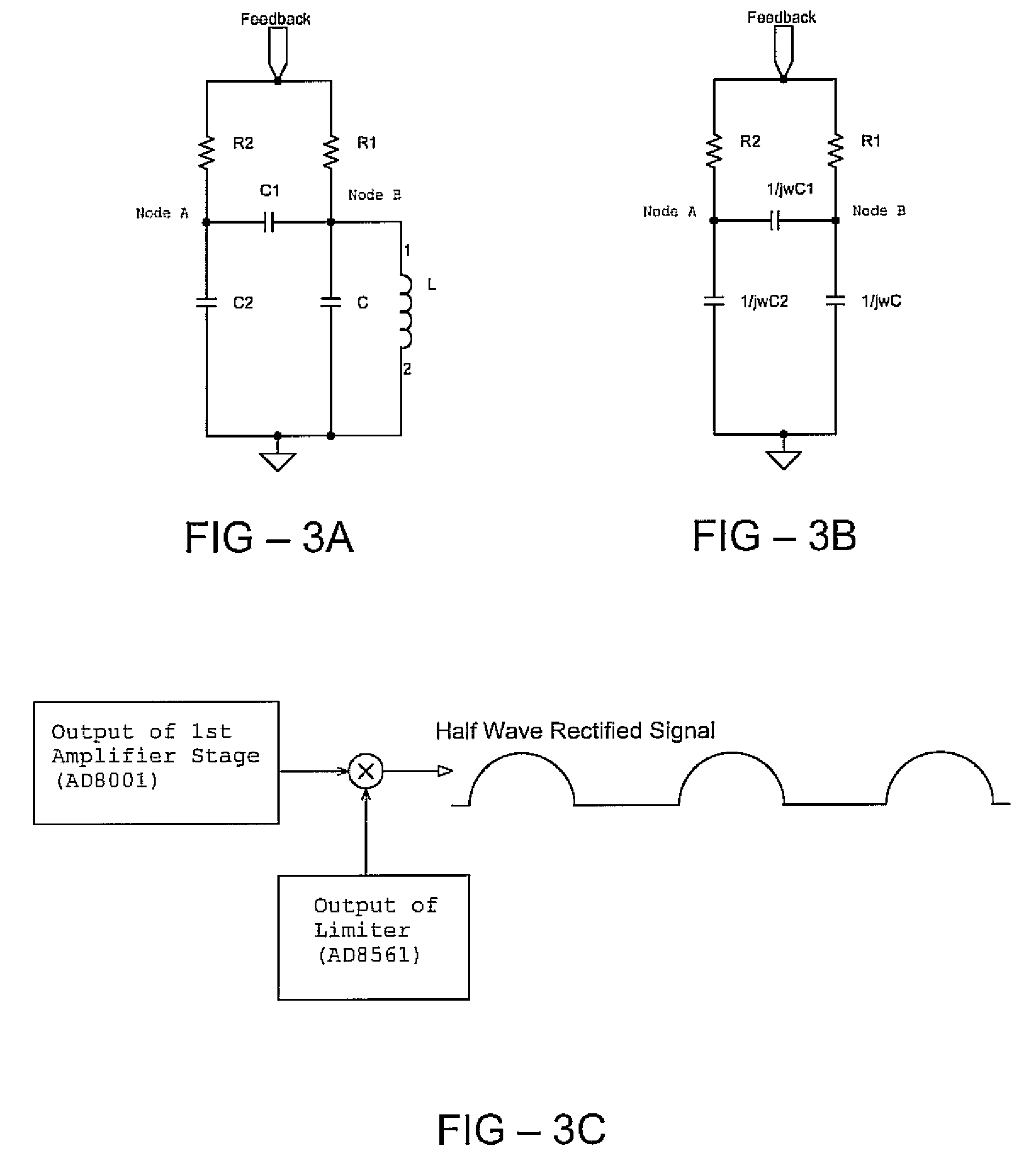Quadrupole resonance using narrowband probes and continuous wave excitation
a narrowband, continuous wave excitation technology, applied in the field of quadratic resonance (qr), can solve the problems that the commercial cw detection system has never been realized, and achieve the effect of reducing detection tim
- Summary
- Abstract
- Description
- Claims
- Application Information
AI Technical Summary
Benefits of technology
Problems solved by technology
Method used
Image
Examples
Embodiment Construction
[0024]Methods and apparatus are described for detecting nitrogen-containing materials such as explosives using continuous-wave (CW) quadrupole resonance (QR) spectroscopy with a narrowband probe fabricated from a thin-film high-temperature superconducting (HTS) resonator to reduce detection time. A CW QR spectrometer with an HTS probe can be used in systems that detect explosives concealed within containers (such as luggage, mail, improvised explosive devices, and minimal metal landmines), or explosives concealed within a person's clothing.
[0025]In a pulsed or transient QR detection, the search region is subjected to a series of RF pulses and a QR response detected in the interval between the RF pulses. Specific nitrogen compounds are detected using a search coil similar to those found in metal detectors. The coil broadcasts short duration radio frequency (RF) pulses and, if a target compound is present, a RF signal is received from nitrogen atoms during the interval between the app...
PUM
 Login to View More
Login to View More Abstract
Description
Claims
Application Information
 Login to View More
Login to View More - R&D
- Intellectual Property
- Life Sciences
- Materials
- Tech Scout
- Unparalleled Data Quality
- Higher Quality Content
- 60% Fewer Hallucinations
Browse by: Latest US Patents, China's latest patents, Technical Efficacy Thesaurus, Application Domain, Technology Topic, Popular Technical Reports.
© 2025 PatSnap. All rights reserved.Legal|Privacy policy|Modern Slavery Act Transparency Statement|Sitemap|About US| Contact US: help@patsnap.com



